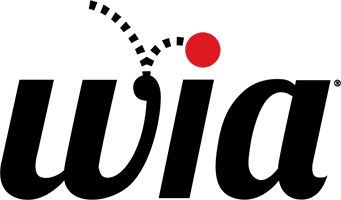Pramita Mukherjee’s journey to becoming the Senior CFX Developer at DreamWorks Animation began nearly 20 years ago in Kolkata, India. Always interested in creative arts, she took a leap of faith and followed her dream of one day creating the cartoons she loved watching on her television screen. Since then, she has moved from India to London to Los Angeles, working in different studios and managing diverse teams.
Mukherjee is also a big believer in giving back. She has taken her skills and volunteers with many organizations, including as a multiple-round mentor for the WIA Mentorship Circles program, where she plays a key role in mentoring young professionals, uplifting the industry’s presence in Southeast Asia, and being part of the core award committees.
Learn more about Mukherjee and her journey through our Q&A below.
- What inspired you to pursue a career in animation? Was there a specific film, TV series, or experience that sparked your interest?
It’s been a long 18 years since I have been working in the animation and visual effects industry. I was born and brought up in Kolkata, India. Right from my childhood, I loved sketching and playing musical instruments. I also learned and practiced Indian classical dance for over 17 years, but what captivated me the most were cartoons, specifically X-Men and DuckTales. Since then, I have dreamed of making animated movies someday. After high school, I did a certification course on 3D animation and landed as an intern in Mumbai in 2007, doing months of graveyard shifts and learning as much as I could. Back in those days, there were very few animation studios in India that were working on animated features for Hollywood. Crest Animation was one of them, and that is where I started my journey as a character rigging intern.
- What is your creative process when starting a new project? What is the first thing you do when an idea strikes?
When I am working on any animated project, be it a feature, short, or episodic, the first creative approach I will take is to read the director’s mind and bring their vision to life. Every director thinks differently. As an artist, it’s very crucial not only to understand the vision but also to creatively help to uplift the output in the best way one can. The first thing I would do with any new idea is put it down on paper, scribbles, or anything that will keep it in front of me. Then I will go over the ideas with my team to see how well it fits the practical implementation, both creatively and without increasing the production cost.
- What are the things that inspire you? Which animators or filmmakers have influenced your work the most?
Being in the industry for almost two decades, the biggest thing that has been inspiring me to keep moving is the animation artistic community around and their urge to create beautiful stories irrespective of all the global barriers for everyone.
- What is the most challenging project you’ve worked on and how did you overcome those challenges?
I will say Puss In Boots: The Last Wish is one of the most challenging projects I worked on. This is the first project where I worked on the whole painterly look throughout the movie. It was quite challenging to simulate the painterly feel for not only the furry characters but also the massive environments.
- How has the animation industry evolved since you began your career? What excites you the most about the future of animation?
Over the last 18 years, I worked in various roles and projects across three continents. I can surely say that technology, creative growth, artistic values, storytelling, visualization, and the overall valuation of being an animation artist with audience acceptance have increased immensely. Even though there is still a long way to go, in today’s animation world, the number of women artists and efforts to bridge the gender inequality gap, both by pay and positions, have immensely improved. I remember there were only two women rigging artists in my batch out of 100 in 2007. Growth is always a part of the process, and it’s really exciting to see the audience’s love for quality storytelling through animation on different platforms has only gotten more. In spite of all the highs and lows, there is and will be a huge section of people waiting to watch iconic characters on screen again and again.
- How do you integrate new technology into your animation work?
In the past 10 years, there has been a major leap in technology in the world of VFX and animation. As an artist, I feel it’s extremely important to stay at par with the upgrades, especially the ones that are directly used in the section of my work. May that be newer software, better render engines, realistic muscle simulators, improved hair and fur plugins—these are all tools to help make our creative visuals come to life in a much faster and easier way. I do understand technology is slowly taking over the art, but I also believe in our industry that the more we find ways to adopt with the new age, blending in the art to make its best use, the more it gives us a better chance to survive longer.
- Is there a piece of advice you’ve received that’s been particularly helpful throughout your career?
Yes, there is one particular thing that I was told way earlier in my career was to keep the quality of my work extremely high, irrespective of all the negative situations around me. This industry can be quite unstable and has ups and downs. Keeping the mind in the right place even in the worst career phase and focusing just to improve the artistic talents in the right direction is very important, as it’s really easy to lose patience and get overwhelmed with all the negativity around in bad times.
- What is your advice for creatives of underrepresented gender identities looking to get into animation?
I strongly believe being visible in every way is one of the primary requirements in animation. Being an artist has nothing to do with the artist’s gender or background, so I will highly recommend voicing up, showing up, the work you do, being present and confident, staying away from negative communities, and, most importantly, keeping up with the work quality, which can make it much easier for anyone from any background to stand out and survive.
- You have been a WIA mentor for nine cycles. What keeps you coming back? Why is the WIA Mentorship Program so important to you?
I joined the WIA Mentorship program in 2020. Honestly, since then, this program has taught me immensely, not just about different work aspects but, most importantly, it has helped me grow with better soft skills, leadership abilities, public speaking, being a better mentor, learning about different artistic upbringings globally, and most certainly made me part of a very healthy and supportive community with talented creatives all around. This program gave me a huge opportunity to give back to the community, and today, after 9 rounds, I am very proud to have mentored 90 young women globally. WIA mentorship has surely become a primary part of my career, and I cannot be grateful enough for this opportunity.
- Why is an organization like WIA so important for people of underrepresented gender identities at all levels in their career journey?
I have been associated with WIA for almost 5 years now, and I can see how impactfully WIA tries to give appreciation and exposure to artists of underrepresented gender identities at all levels. With various speaker events, highlighting the challenges and bringing guidance and experience of industry leaders, WIA does its best to provide a healthy and supportive community, in turn creating a major network for all of them to connect, be visible, and grow together.
- How has WIA impacted you?
I came to the USA in September 2019, and within a few months, I lost my father to cancer. Adjusting to a new work life in a new country already made my life hard, and with my father gone, I was mentally devastated. It was that time when I came to know about WIA, and without knowing what to expect, I joined the community and signed up for the mentorship program. WIA not only gave me a newer purpose in my career but also helped me connect to a huge network of a very supportive community. WIA has also given me a different identity as a mentor and supported me throughout the past 5 years every time I needed help with. If you are reading my story, I highly recommend joining WIA and feel the difference.




